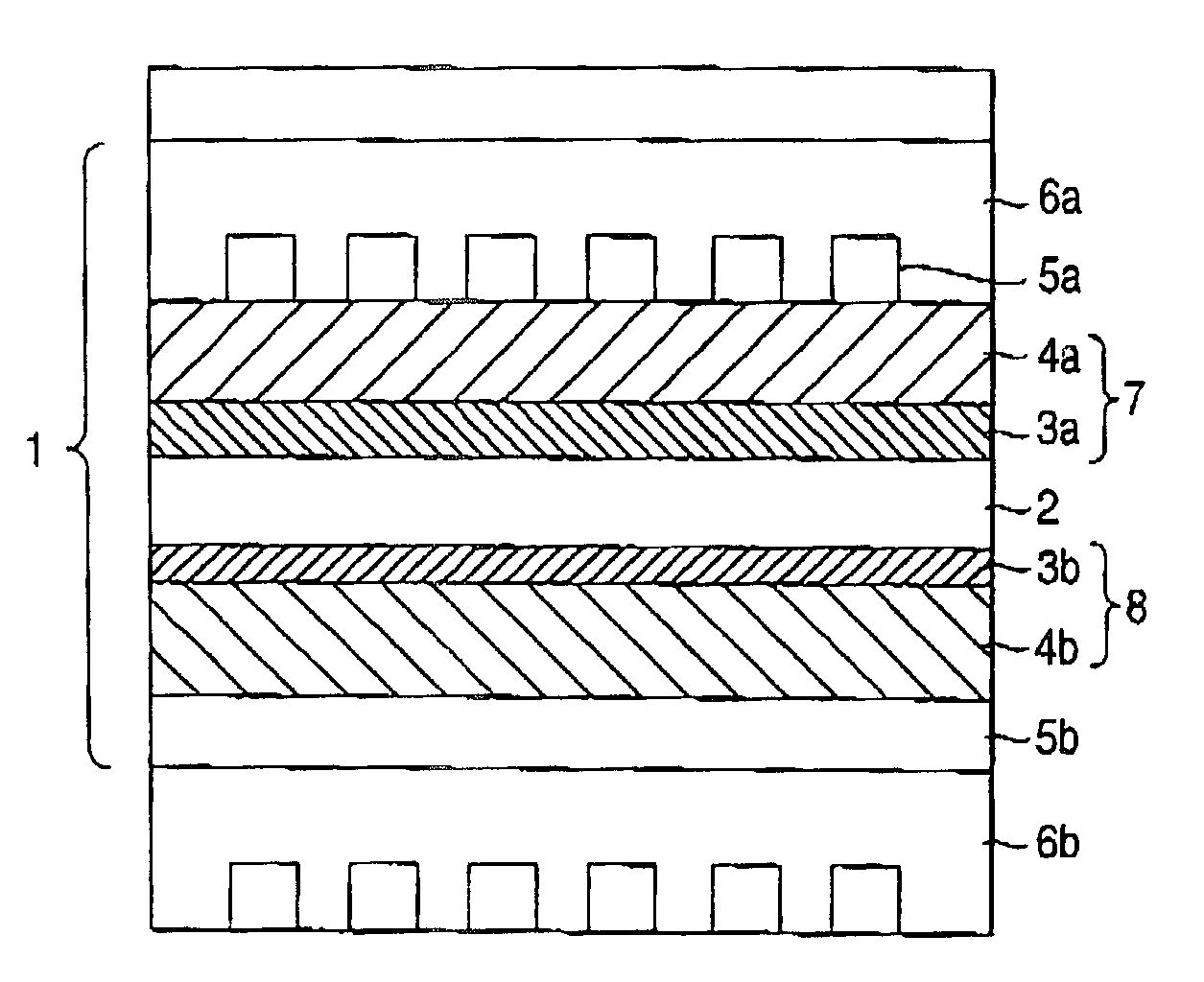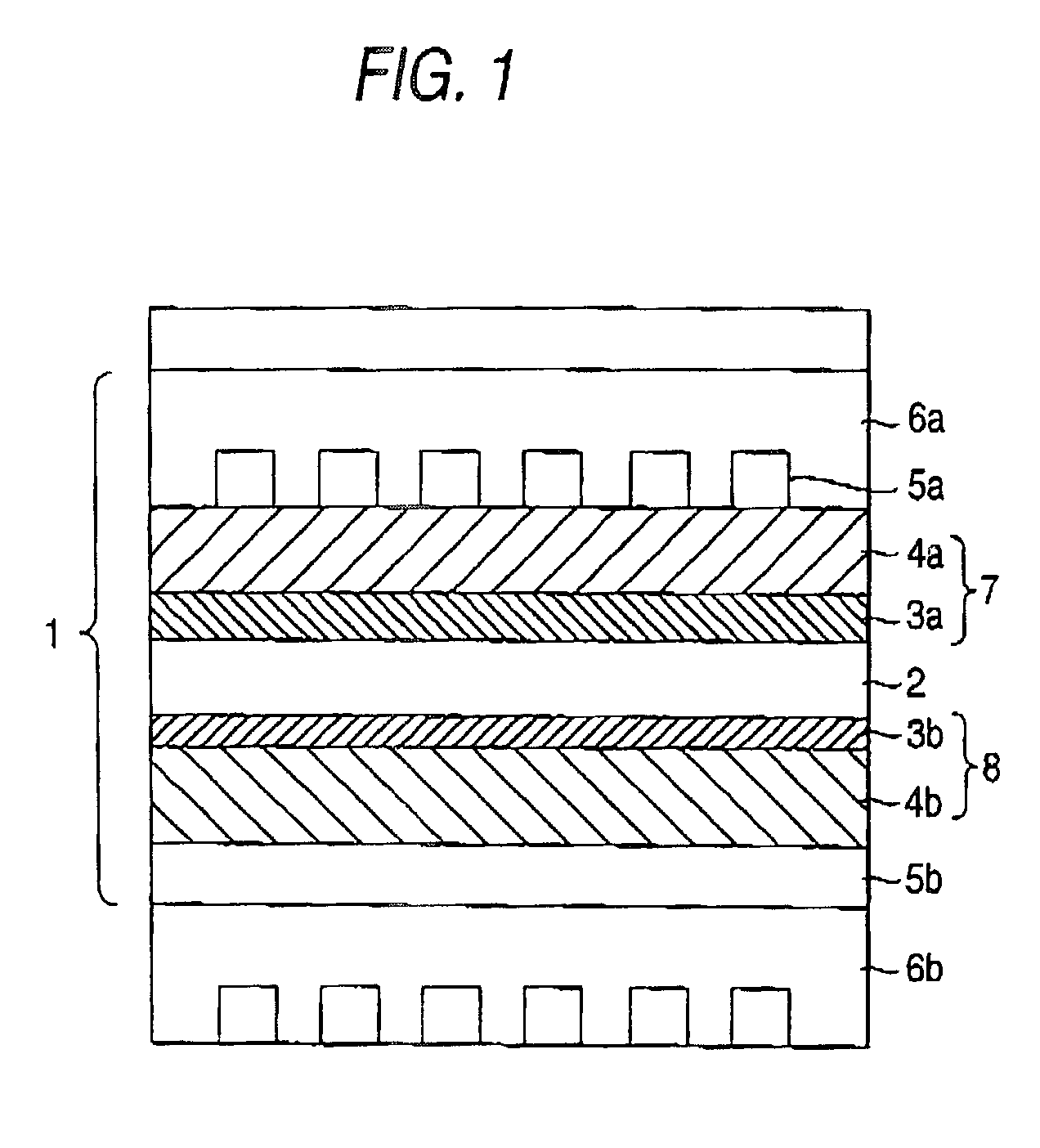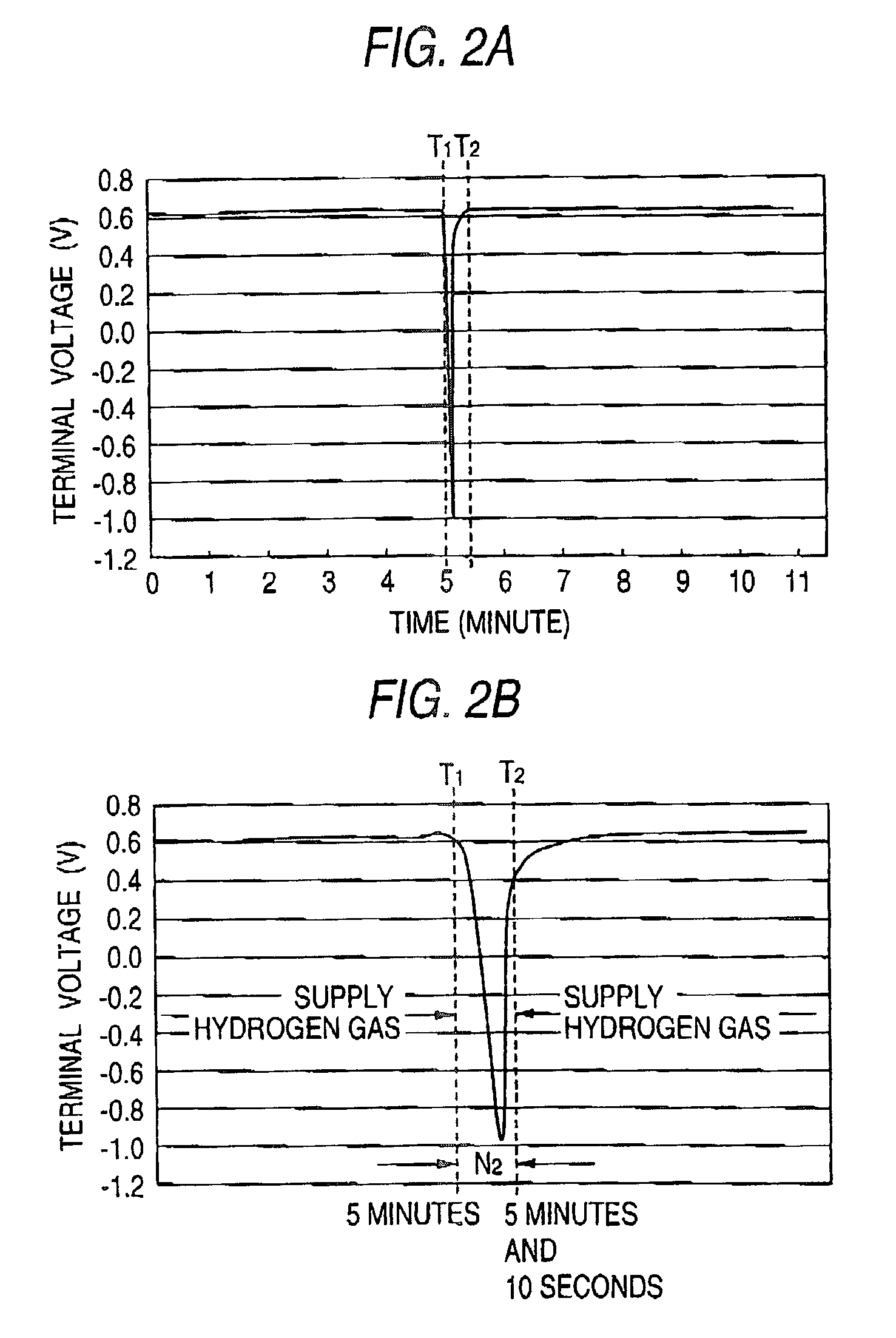Fuel electrode for solid polymer electrolyte fuel cell, solid polymer electrolyte fuel cell and method for controlling solid polymer electrolyte fuel cell
a fuel cell and electrolyte technology, applied in the direction of fuel cells, solid electrolyte fuel cells, cell components, etc., can solve the problems of deteriorating the performance of the fuel electrode, reducing the generating performance of the fuel cell, and affecting the deterioration of the catalyst material in the fuel electrode, so as to prevent the deterioration of the catalytic material, the effect of suppressing the deterioration of the catalyst material
- Summary
- Abstract
- Description
- Claims
- Application Information
AI Technical Summary
Benefits of technology
Problems solved by technology
Method used
Image
Examples
embodiment 1
[Embodiment 1]
[Fuel Electrode]
[0106]A catalyst paste was prepared as follows.
[0107]platinum-ruthenium alloy-carrying carbon catalyst, which has 54% of platinum-ruthenium alloy concentration (TEC61E54 produced by Tanaka Rare Metals Industries) and powder of iron phthalocyanine complex (produced by Aldorich) are prepared. Then 10 g of the mixture of the alloy and powder were weighed by a balance to realize a weight ratio of 7 to 3. A catalyst paste was prepared by mixing sufficiently 140 g of ion-exchanging resin solution (Nafion Se5112 produced by Du Pont), 5 g of water and 45 g of isopropyl alcohol with 10 g of the mixture of the alloy and powder. Next, the catalyst paste was adjusted to provide an alloy concentration of 0.3 mg / cm2. The adjusted catalyst paste was applied to a carbon paper which had already had a water repellant treatment with PTFE. Thereafter, the applied carbon paper was dried to remove isopropyl alcohol and water to thereby prepare a fuel electrode.
[Oxidant Elect...
embodiment 2
[Embodiment 2]
[0114]A single cell for a fuel cell was prepared as well as in embodiment 1. However, when preparing a catalyst paste for a fuel electrode, iron tetraphenyl porphyrin complex (produced by Aldorich) powder was used as a metallic complex powder instead of the iron phthalocyanine complex (produced by Aldorich) powder. The reverse voltage reproduction test illustrated in Test 1 was carried out on the single cell.
PUM
| Property | Measurement | Unit |
|---|---|---|
| current density | aaaaa | aaaaa |
| weight ratio | aaaaa | aaaaa |
| weight ratio | aaaaa | aaaaa |
Abstract
Description
Claims
Application Information
 Login to View More
Login to View More - R&D
- Intellectual Property
- Life Sciences
- Materials
- Tech Scout
- Unparalleled Data Quality
- Higher Quality Content
- 60% Fewer Hallucinations
Browse by: Latest US Patents, China's latest patents, Technical Efficacy Thesaurus, Application Domain, Technology Topic, Popular Technical Reports.
© 2025 PatSnap. All rights reserved.Legal|Privacy policy|Modern Slavery Act Transparency Statement|Sitemap|About US| Contact US: help@patsnap.com



